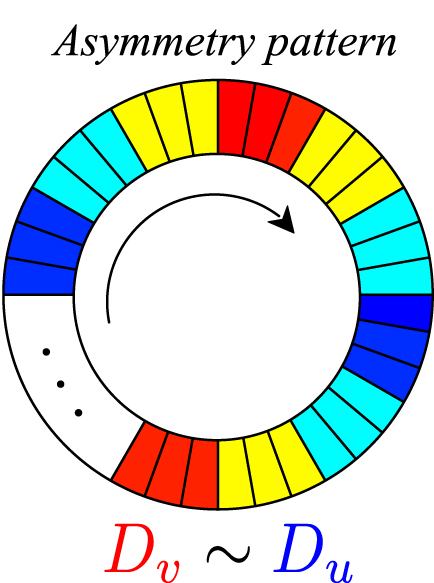EPJ B Highlight - Updating Turing’s model of pattern formation
- Details
- Published on 03 August 2020

Through fresh analysis of a method first proposed by Alan Turing to explain the diversity of natural patterns, a team of researchers offer new explanations of how living systems can order themselves on large scales.
In 1952, Alan Turing published a study which described mathematically how systems composed of many living organisms can form rich and diverse arrays of orderly patterns. He proposed that this ‘self-organisation’ arises from instabilities in un-patterned systems, which can form as different species jostle for space and resources. So far, however, researchers have struggled to reproduce Turing patterns in laboratory conditions, raising serious doubts about its applicability. In a new study published in EPJ B, researchers led by Malbor Asllani at the University of Limerick, Ireland, have revisited Turing’s theory to prove mathematically how instabilities can occur through simple reactions, and in widely varied environmental conditions.
The team’s results could help biologists to better understand the origins of many ordered structures in nature, from spots and stripes on animal coats, to clusters of vegetation in arid environments. In Turing’s original model, he introduced two diffusing chemical species to different points on a closed ring of cells. As they diffused across adjacent cells, these species ‘competed’ with each other as they interacted; eventually organising to form patterns. This pattern formation depended on the fact that the symmetry during this process could be broken to different degrees, depending on the ratio between the diffusion speeds of each species; a mechanism now named the ‘Turing instability.’ However, a significant drawback of Turing’s mechanism was that it relied on the unrealistic assumption that many chemicals diffuse at different paces.
Through their calculations, Asllani’s team showed that in sufficiently large rings of cells, where diffusion asymmetry causes both species to travel in the same direction, the instabilities which generate ordered patterns will always arise – even when competing chemicals diffuse at the same rate. Once formed, the patterns will either remain stationary, or propagate steadily around the ring as waves. The team’s result addresses one of Turing’s key concerns about his own theory, and is an important step forward in our understanding of the innate drive for living systems to organise themselves.
M Asllani, T Carletti, D Fanelli, P K Maini (2020), A universal route to pattern formation in multicellular systems, European Physical Journal B 93:135, DOI: 10.1140/epjb/e2020-10206-3




